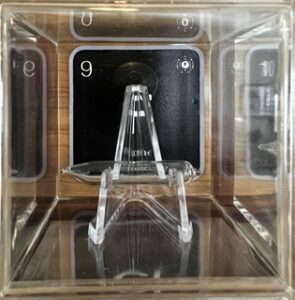Fluorine
Atomic Number: 9
Atomic Mass: 18.998403 u

When we think of elements that have profoundly impacted our daily lives, we often overlook Fluorine, symbolized as ‘F’ and bearing the atomic number 9 on the periodic table. This pale yellow gas is the most electronegative and reactive of all elements, making it a powerhouse in various industries and applications. In this blog post, we’ll explore the fascinating world of fluorine, its properties, and the multitude of ways it benefits modern society.
The Discovery of Fluorine
Fluorine’s story begins in the early 19th century, but its path to discovery was fraught with challenges and even danger. Several chemists suffered serious injuries or death while attempting to isolate the element, earning it a somewhat fearsome reputation. It was finally isolated in 1886 by Henri Moissan, a feat that later earned him the Nobel Prize in Chemistry.
Properties of Fluorine
As the most electronegative element, fluorine has a voracious appetite for electrons, forming strong bonds with almost any other element. It’s this reactivity that makes fluorine both incredibly useful and challenging to work with. In its pure form, it’s a highly corrosive and toxic gas.
Fluorine in Everyday Life
1. Dental Care
One of the most well-known uses of fluorine is in dental health. Fluoride, a compound containing fluorine, is added to toothpaste and public water supplies in many countries to prevent tooth decay. It works by strengthening the tooth enamel, making it more resistant to acid attacks from bacteria.
2. Pharmaceuticals
Fluorine plays a significant role in the pharmaceutical industry. Many medications, including several antidepressants and antibiotics, contain fluorine. Its inclusion often increases the effectiveness and stability of these drugs.
3. Nonstick Cookware
Teflon, the non-stick coating found in many kitchen cookwares, is made from polytetrafluoroethylene (PTFE), a fluorine-containing polymer. This application showcases fluorine’s ability to create surfaces that almost nothing sticks to.
4. Refrigerants
Fluorine is a key component in the production of chlorofluorocarbons (CFCs) and hydrochlorofluorocarbons (HCFCs), which were widely used as refrigerants and propellants. However, due to their ozone-depleting properties, their use is being phased out.
Environmental and Safety Considerations
While fluorine’s applications are incredibly diverse, they do not come without environmental and health concerns. CFCs, once common in refrigerants and aerosols, contributed significantly to ozone layer depletion. Alternatives that are less harmful to the ozone layer, such as hydrofluorocarbons (HFCs), are now more commonly used.
In terms of health, excessive exposure to fluoride can lead to dental fluorosis, and high levels of it can be toxic. This has led to debates over the fluoridation of public water supplies in some regions.
Conclusion: A Dual-Natured Element
Fluorine, with its reactive nature and electronegativity, stands as a testament to the dual nature of chemical elements – offering tremendous benefits while also posing challenges and risks. From improving dental health to its roles in various industries, fluorine’s impact on our daily lives is undeniable. As we continue to explore and utilize this element, it’s essential to balance its benefits with environmental and health considerations. In the dynamic world of chemistry, fluorine truly is a reactive powerhouse, playing a pivotal role in shaping our modern world.
 using WordPress and
using WordPress and
No responses yet